
views
Growing Crystal Needles
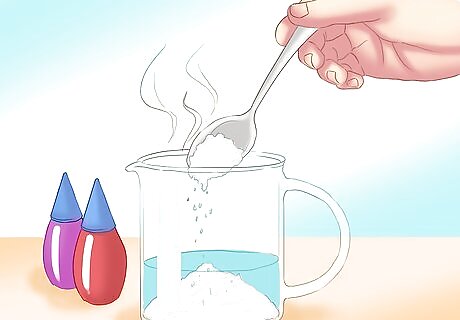
Combine the ingredients in the container. Add about a half cup (120mL) of Epsom salt (magnesium sulfate heptahydrate) with equal parts hot water. This will create a saturated solution. A solution is considered saturated when no more solids can be dissolved into the liquid. Add a few drops of food coloring to the mixture if you want your crystals to have some color.
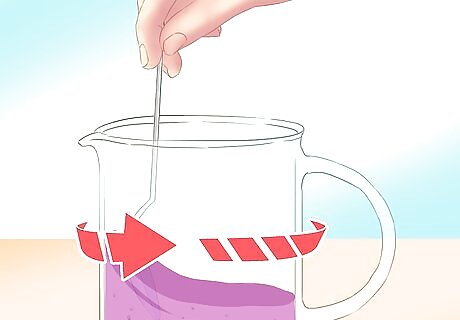
Stir the ingredients. Use a spoon to stir the mixture until the salt is dissolved. It should only take about a minute. If some of the salt crystals are left in the bottom it is still going to work so don't worry about it.
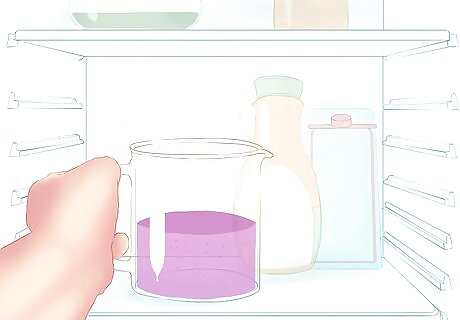
Place the container in the refrigerator. Cooling the mixture rapidly will help the crystals form more quickly. Water dissolves more salt when the temperature of the water is higher because there is more space between each molecule. Since there is less room in cool water, the salt will revert back to a crystal form as it cools. The salt molecules will stick together, forming a pattern. This is how crystals occur.

Check back on the container after about 3 hours. You should have a nice collection of crystal needles forming. You can scoop the crystal out with a spoon and take a closer look, or pour out the remaining liquid. The crystals will be very fragile, so handle them with care.
Making Sugar Crystals
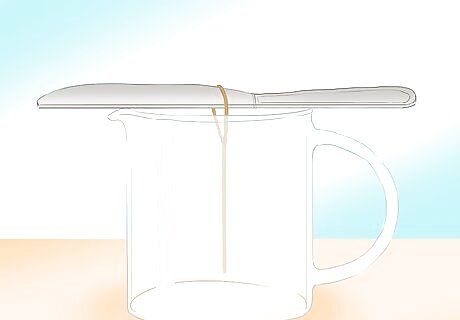
Tie a string around a butter knife or similar object. Make the string so it hangs an inch or so above the bottom of the container or jar that you will use to make crystals. You can also try to suspend a lollipop or popsicle stick. It makes a good handle if you plan to eat your project when it's done.
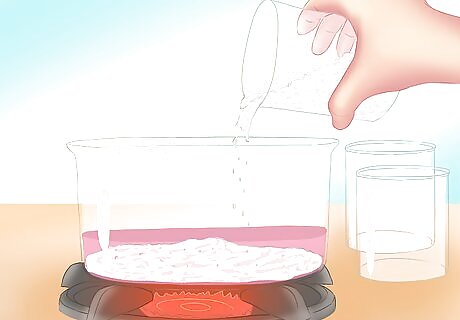
Boil some water and add the ingredients. Stir three cups (660g) of sugar into one cup (240mL) of boiling water. Add some food coloring to give your crystals some color.
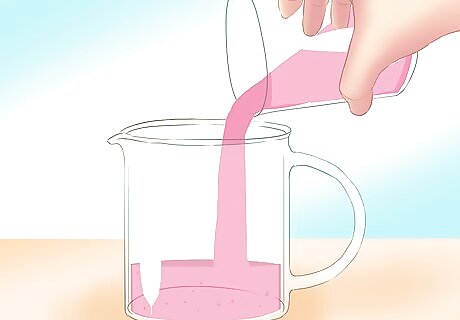
Pour the mixture into your container carefully. Be sure the container is completely clean so your sugar crystals do not latch on to any leftover food fragments or dirt in the container instead of your string.
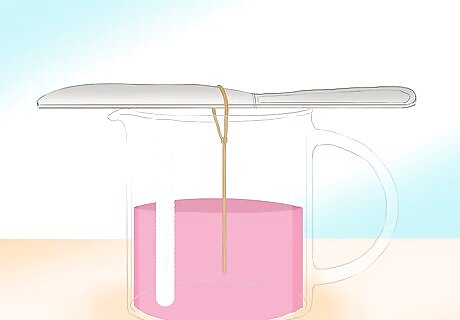
Balance the string over the opening of the container. Place the knife over the top of the container so the string hangs down. The string should hang into the mixture, but do not let the string touch the bottom of the jar because the crystals with grow there instead of the string.
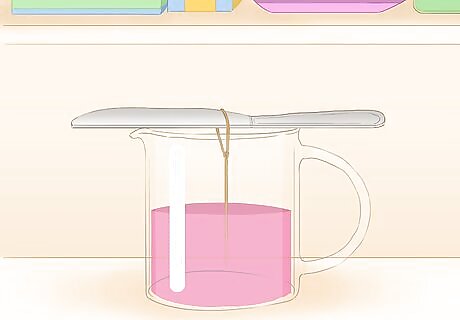
Store the container. Find a safe place to store the container for a couple weeks. You should look for someplace that is clean and where the container won't get knocked around. You can place it in a box on the top of your refrigerator, or an unused shelf of a kitchen cabinet.
Growing Gems
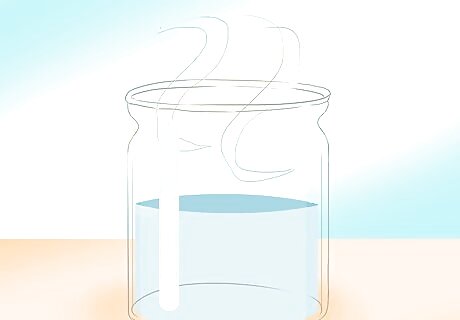
Collect some hot water in a jar. Collect approximately 100mL (.44 cups) of hot water. The water doesn't need to be boiling. Tap water will work fine. Just leave the tap on for a minute until the water is very hot. To get the purest crystals, begin with a hot solution and allow it to cool slowly by leaving it at room temperature. This slow process will allow the crystal to reject any impurities as the molecules are arranged.
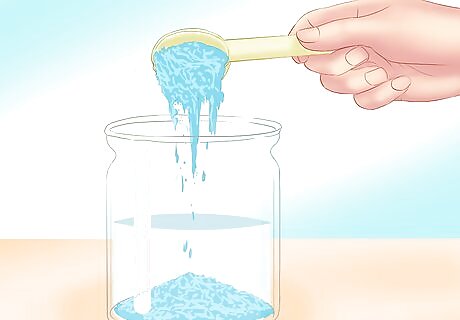
Dissolve a crystal chemical in hot water until the solution is saturated. The solution will be saturated when it can no longer dissolve more crystals. You will probably need about 60 grams (2.1oz.) of chemical. Add more until the crystal no longer dissolve. There are a number of chemicals you can select depending on the color of crystal you want to make. Some of the chemicals, like borax, may be around your house or at the local grocery store. Other ingredients are available to order online. Borax can be used to produce clear crystals. Copper sulfate can be used to create bright blue crystals. Purple chrome alum can be used to create purple crystals.
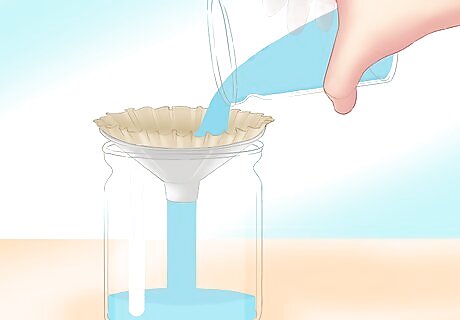
Filter the solution. Pouring the solution through a filter will help to get rid of any excess crystals that could not be dissolved in the solution. Take a plastic funnel and place a coffee filter in the funnel. Then pour the solution into a separate container through the funnel. Now you should have a clear solution with no crystals floating around in the liquid.

Place a small amount of the saturated solution on a plate. Leave it for 24 hours. Once you have some small crystals scrape them off the plate with a butter knife. You can use these small crystals as seeds to produce larger crystals.
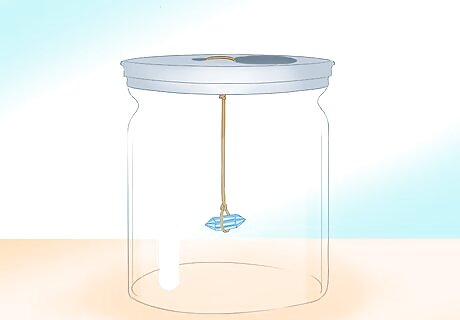
Suspend the seed crystal in a clean jar. You can poke two small holes in the lid and tie one end around the seed crystal and tie the other end to the top of the jar. The container should be clean so the crystals attach to your seed crystal and not the container. Pick any container that has a good cover that seals. Or make a cover by suspending your crystal from a flat piece of cardboard.
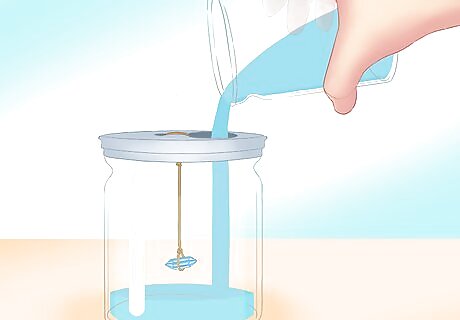
Pour the saturated solution into the container with crystal seed. Evaporation will help speed up the formation of crystals. Wait as the solution evaporates and your crystal grows larger. Be patient. It can take weeks to grow a large crystal. Keep the object in a cool, shaded area. Make sure it is someplace where the container won't be moved or disturbed too often.
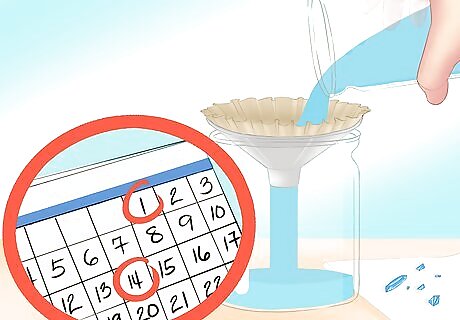
Refresh the solution every two weeks. Over time, small crystals will begin to form in the solution, so it will be necessary to put your seed crystals into a new container. Remove the seed crystals and place them on a paper towel. Pour the solution through a coffee filter into the new container. Scrape out any crystals in the old container. You can save them and use them as seed crystals for the next time you want to grow a crystal. If you need more solution, dissolve some more crystal powder in hot water and add the solution to your new container.
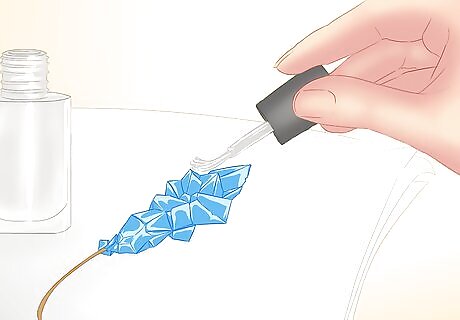
Coat the surface of the crystal with a lacquer. To protect the crystal from being destroyed by exposure to moisture, cover the crystal with a coat of lacquer. Use a brush to apply an even coat over the entire surface. You can also try coating the surface with a layer of nail polish to protect it.

















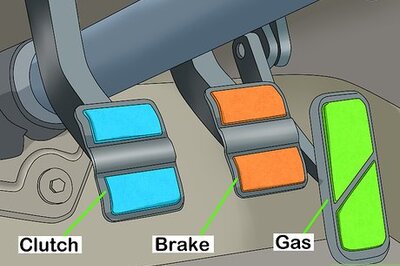

Comments
0 comment